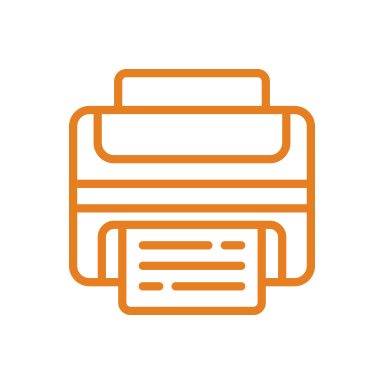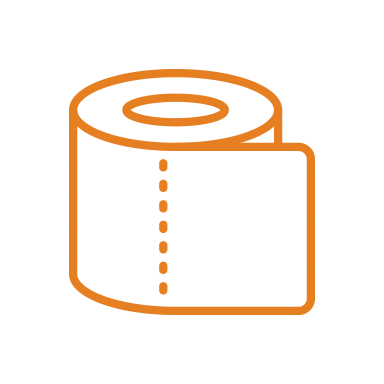
For manufacturing plants, utility operations, and other facilities, managing attendance, tracking assets, and controlling access are essential daily tasks. Traditional methods of check-in and check-out, like paper logs and manual ID scanning, are time-consuming and prone to human error. As technology advances and supply chains become more complex, the need to automate such tasks is becoming increasingly is increasing.
Misplaced equipment and poorly monitored operations costs organizations billions each year by lowering productivity and causing production downtimes. According to Forbes, unplanned downtime can cost manufacturing companies $50 billion per year. Improving your tracking capabilities can vastly improve operational efficiency and reduce unnecessary losses.
What is an Check In / Check Out System?
A check-in/check-out system is a method used by businesses to track the movement and usage of assets—such as tools, equipment, devices, or inventory—between people and locations. The system records who has an item, when it was taken, and when it’s returned. Whether done manually or digitally, the goal is to maintain control over valuable resources, improve accountability, and reduce losses caused by misplacement, theft, or underutilization.
These systems are especially useful in environments where items are shared among teams or frequently relocated, such as warehouses, manufacturing facilities, hospitals, and construction sites. With proper tracking, organizations can minimize downtime caused by missing equipment, plan maintenance more effectively, and ensure high-cost assets are being used efficiently.

Using RFID to Track Check In / Check Out Processes
Today, businesses are moving beyond spreadsheets and sign-out sheets by adopting modern technology like RFID (Radio Frequency Identification). RFID-powered check-in/check-out systems automate the tracking process, enabling real-time visibility, faster transactions, and fewer errors. By simply passing tagged items through an RFID reader, organizations can instantly log usage activity without manual input—making the entire process faster, more accurate, and far more scalable.
RFID technology enables quick, contactless, and accurate data capture, which can be stored in a central database and used to track attendance, control access, and manage assets.
Why is a Check In / Check Out System Important?
A check-in/check-out system is essential for any organization that manages valuable tools, equipment, or inventory across teams and locations. Without a structured way to track asset usage, businesses risk frequent losses, misplacement, and operational delays.
By requiring users to formally check out items, companies create a clear chain of responsibility—boosting accountability and reducing theft or hoarding. Employees are far more likely to return what they borrow when there’s a digital record tied to their name or ID.
Check In / Check Out System Use Cases
- Manufacturing: Track shared tools, test equipment, and laptops.
- Warehousing: Monitor forklifts, scanners, and safety gear.
- Healthcare: Manage medical devices and mobile equipment.
- Construction: Keep tabs on power tools and site gear.
Beyond accountability, these systems significantly improve operational efficiency. Real-time visibility into asset availability helps reduce downtime, streamline workflows, and avoid unnecessary equipment purchases or rentals. Businesses can better manage maintenance schedules, forecast inventory needs, and stay audit-ready with timestamped usage logs.
Whether in manufacturing, warehousing, healthcare, or construction, a check-in/check-out system transforms asset chaos into clarity—saving both time and money.
The cost of operational inefficiency
Unplanned downtime costs manufacturers $50 billion per year. Improving your tracking capabilities can improve efficiency and reduce unnecessary losses.
Source: Forbes
Businesses may lose between 20% to 30% of their annual revenue due to inefficient processes, highlighting the critical need for streamlined operations.
Source: Avitus Group
Supply chain disruptions cost U.S. organizations an average of $228 million per year, underscoring the need for improved tracking and optimization.
Source: AT&T Business
Pros of Check In / Check Out Systems
For many organizations, tracking the movement of tools, equipment, and inventory isn’t just about organization—it’s about minimizing downtime, maximizing accountability, and improving efficiency. RFID check-in/check-out systems bring automation and real-time visibility to these processes, helping businesses stay lean, secure, and scalable in fast-paced environments.
Faster Equipment Turnaround – RFID systems eliminate the need for manual scans or paperwork. Items with RFID tags are automatically logged as they pass through readers—making it easy to track assets as they move through loading docks, tool rooms, or production zones. This speeds up the handoff process and keeps workflows moving without bottlenecks.
Improved Asset Security and Accountability – Each RFID tag has a unique identifier that’s hard to replicate, allowing you to track exactly who checked out what and when. This creates a clear chain of custody for high-value equipment or tools and reduces losses due to misplacement or theft—common challenges in shared workspaces.
Fewer Manual Errors – By automating data capture, RFID systems minimize the risk of human error during check-in/check-out. No more illegible logbooks or forgotten scans—just accurate, automatic tracking that ensures your records reflect reality.
Real-Time Visibility into Operations – Know where your assets are at any given moment. RFID check-in systems provide live status updates on the movement and location of items, helping teams avoid delays caused by missing tools or inventory. For operations managers, this means better planning, fewer disruptions, and tighter control over resources.
💡 Quick Tip: Start small. Pilot your RFID check-in system in one high-traffic area—like a tool room—before scaling across your entire operation. This lets you fine-tune your setup, prove ROI, and build internal buy-in without disrupting existing workflows.
Cons of RFID Check-In Systems
While RFID check-in/check-out systems offer significant benefits for manufacturers and distributors, they aren’t without challenges. Understanding potential drawbacks can help you plan smarter and avoid surprises during implementation.
Upfront Costs Can Be High – Setting up an RFID system requires investment in readers, tags, infrastructure, and possibly integration with existing software. For smaller operations or those with tight budgets, these initial costs can be a hurdle. However, many businesses find that the long-term gains in efficiency and asset control more than justify the upfront expense.
Signal Interference Risks – RFID systems can experience interference from metal surfaces, liquids, or nearby electronics—common elements in industrial environments. This can result in missed or false reads. Proper testing and selecting the right type of RFID tags (e.g., on-metal or ruggedized tags) can minimize this issue, but it adds complexity to deployment.
Limited Read Range – Unlike GPS or long-range wireless tech, RFID tags typically have a short read range—often just a few feet. In large facilities, this means you’ll need to deploy multiple readers to cover key areas, which can increase system complexity and cost. Planning your reader layout strategically is essential to ensure full coverage.

Is an RFID Check-In System Right for You?
For manufacturers and distributors, efficiency, traceability, and accountability are critical to staying competitive. RFID check-in/check-out systems offer a powerful way to track tools, equipment, and inventory across facilities with speed and precision. By automating asset tracking and capturing real-time data, these systems help reduce downtime, prevent loss, and keep operations running smoothly.
That said, RFID isn’t a one-size-fits-all solution. The initial setup cost, infrastructure requirements, and potential for signal interference in industrial environments mean careful planning is essential. If you’re working with a limited budget or only need basic tracking, alternative methods like barcode or QR-based systems might offer a better cost-benefit balance.
In high-volume or multi-site operations, however, the ROI of RFID can be significant. The ability to locate assets instantly, reduce manual errors, and streamline check-in/check-out across teams and departments can quickly offset the upfront investment. If your facility struggles with lost equipment, inefficient handoffs, or asset mismanagement, an RFID check-in system may be a smart move toward greater control and productivity.
Interested in RFID?
An RFID tracking system can help organizations of all sizes improve their supply chain efficiency. Contact the CYBRA team to schedule a demo today.















